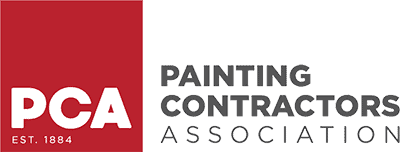You’ve patched the drywall, taped off the trim, and picked your paint color. But before cracking open that can of color, there’s one big question that throws off a lot of Martinsburg homeowners: how many coats of primer do I need?
The answer isn’t always clear-cut, especially when you’re working with different materials like drywall, wood, plaster, or masonry.
Some surfaces need just one solid coat. Others? Two or three. The goal is to get the best adhesion, the smoothest paint coat, and long-lasting results—without overdoing it or wasting time.
Homes in Martinsburg, WV often have a mix of materials, especially if you’re updating older rooms with plaster walls or trying to cover up bold color choices from years past.
Let’s break it down by surface type, project goals, and the best-case scenarios for one, two, or even three coats of primer.
Key Takeaways:
- How many coats of primer do I need? One coat works for clean, previously painted walls.
- Two coats are best for drywall, wood, or color changes.
- Three coats help cover stains or rough, porous surfaces.
- Surface type, prep, and humidity all affect how much primer you need.
- Professional painters in Martinsburg, WV can help you get it right.
One Coat of Primer: When You Can Keep It Simple
Not every house painting project needs multiple coats. If the surface is in good condition—like a previously painted wall with no major damage or stains—one coat might do the trick.
You can usually get away with a single coat if:
- The wall was already painted in a similar color
- There are no major stains, glossy patches, or peeling areas
- You’re using latex paint with built-in primer
- The surface has been cleaned properly (goodbye, dust and old mildew)
We see this a lot in newer homes around Martinsburg where locals are just freshening up a bedroom or hallway. Still, even if you only need one coat, don’t skip the prep. Sand rough areas with sandpaper, clean off the wall or ceiling, and make sure you’re not painting over hidden mold, lead-based paint, or uneven plaster.
A single coat of primer works best if the wall has low porosity and you’re not making a dramatic color change. It lays a smooth base coat that helps the paint stick, dry evenly, and look better overall.
Why Two Coats of Primer Is Usually the Safe Bet
Ask most painters and they’ll tell you—two coats is often the way to go. It’s that middle ground between too little and too much, especially if your walls have been patched, you’re working with drywall, or switching from a dark to a light shade.
Here’s when two coats make sense:
- Covering joint compound patches or fresh drywall
- Painting over deep, dark oil paint or stained surfaces
- Applying a lighter color over bold shades like navy or red
- Working with porous surfaces like unfinished wood or masonry
- Painting areas with previous water damage, smoke stains, or humidity buildup like in a bathroom
The first coat acts as your base for adhesion. The second coat levels things out, helps even out any differences in texture, and blocks anything that might bleed through the paint.
This is the standard recommendation for most home improvement projects in Martinsburg. It gives your topcoat the best chance at a clean, smooth finish, especially if you’re working with materials like wood, concrete, or metal that can soak up primer unevenly.
If you’re not sure about paint types, we broke it down in this helpful guide: Oil-Based Paint vs Water-Based Paint.
Three Coats? Sometimes You Really Do Need Them
Three coats might sound like overkill, but some surfaces truly need that extra attention. You’ll thank yourself when the paint doesn’t peel, fade, or bubble six months down the road.
You may want to apply three coats if:
- You’re dealing with popcorn ceilings, heavy texturing, or deeply pitted masonry
- There are visible stains from water, smoke, or previous mold issues
- The wall was previously painted with a low-quality oil product or has signs of heat damage
- You’re working with rough or unsealed wood siding, especially outdoors
Older homes around Martinsburg, especially those with brick or stone—can be more porous than they look. The extra coat helps seal the surface and build a strong base for your paint. Think of it like prepping a rough piece of wood in woodworking—sometimes one pass of stain just won’t cut it.
Also, if you’re wondering how many coats of color to follow your primer with, check out: How Many Coats of Paint for Wall
What Impacts Your Primer Needs?
Several factors affect how many coats of primer you need, and it’s not just the surface itself. Things like prep, weather, and even your paintbrush or sprayer technique matter more than you think.
Things that change the game:
- Surface material: Drywall, concrete, plaster, and metal each absorb primer differently.
- Surface condition: Clean, sanded surfaces need less. Damaged or stained ones need more.
- Previous coatings: Was it latex, oil, or some off-brand that barely stuck?
- Climate: Martinsburg summers can get humid, which affects dry time and how well your coats bond.
For best results, clean the surface (a quick wipe-down helps), sand any glossy patches, and allow each coat to dry before applying the next. Don’t rush it—even if the wall looks dry, give it time to cure.
Primer Tips from Professional Painters in Martinsburg, WV
This is where the experience of professional painters in Martinsburg, WV can save you a lot of guesswork. Here are a few rules they swear by:
- Always clean before priming—dust, grease, and surface grime kill adhesion.
- Use the right type of primer for your surface (wood, metal, masonry).
- Spot-prime patched drywall areas instead of re-priming the entire wall.
- Sand between coats if the surface feels rough.
- Let each coat dry completely—don’t rush it, especially on humid days.
When painting around furniture, tight spaces, or dealing with layers of previous paint, good prep makes all the difference. If you’re working in a high-moisture space or are sensitive to paint fumes, this post might help: House Painting Trends
Final Thoughts: So, How Many Coats of Primer Do I Need in Martinsburg, WV?
If you’ve made it this far, you probably guessed that there’s no one-size answer. But the rule of thumb is simple enough to remember:
- One coat: Clean, smooth walls with no big color change.
- Two coats: New surfaces, patchy repairs, or bold-to-light color changes.
- Three coats: Porous materials, heavy stains, textured ceilings, or poor prior coatings.
If you’re stuck or not sure what your wall needs, call in professional painters in Martinsburg, WV who work with local homes every day. They know how different materials, finishes, and even weather affect how many coats of primer you’ll actually need.
Here’s how Appaloosa Painting Co. makes the process simple:
- Free color consultation tailored to your space, lighting, and material
- Full prep including surface cleaning, sanding, and spot repair
- Primer selection based on material—wood, masonry, plaster, or metal
- Neat, efficient painters who apply each coat evenly
- Final walkthrough and cleanup—no mess left behind
Call Appaloosa Painting Co. today for a FREE estimate in Charles Town, Martinsburg, WV, and the surrounding areas. Dial 540-202-7600 to book your consultation.



